Lotus Emira VS Dacia Spring – Specs, Efficiency & Price Comparison
Which model is the better choice – the Lotus Emira or the Dacia Spring? We compare performance (405 HP vs 65 HP), boot capacity (208 L vs 308 L), efficiency (11.30 L vs 13.20 kWh), and of course, the price (82300 £ vs 14500 £).
Find out now which car fits your needs better!
The Lotus Emira (Coupe) is powered by a Petrol engine and comes with a Automatic or Manuel transmission. In comparison, the Dacia Spring (SUV) features a Electric engine and a Automatic gearbox.
When it comes to boot capacity, the Lotus Emira offers 208 L, while the Dacia Spring provides 308 L – depending on what matters most to you. If you’re looking for more power, you’ll need to decide whether the 405 HP of the Lotus Emira or the 65 HP of the Dacia Spring suits your needs better.
There are also differences in efficiency: 11.30 L vs 13.20 kWh. In terms of price, the Lotus Emira starts at 82300 £, while the Dacia Spring is available from 14500 £.
Compare all the key specs now and find out which model fits your lifestyle best!
Lotus Emira
The Emira stands out in the sports car segment with its sleek design and dynamic performance, capturing the essence of driving passion. It seamlessly blends modern technology with a classic appeal, offering drivers an exhilarating yet refined experience. With meticulous attention to detail and high-quality craftsmanship, the Emira promises to be a standout choice for those seeking both thrill and luxury.
details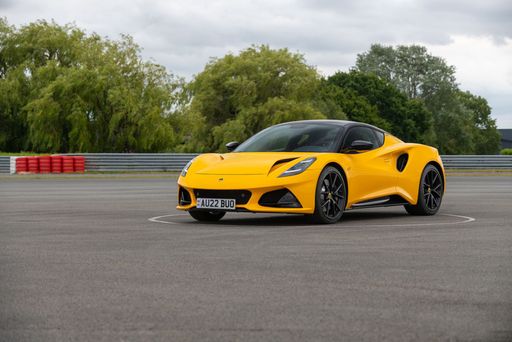 @ Lotus
@ Lotus
 @ Lotus
@ Lotus
 @ Lotus
@ Lotus
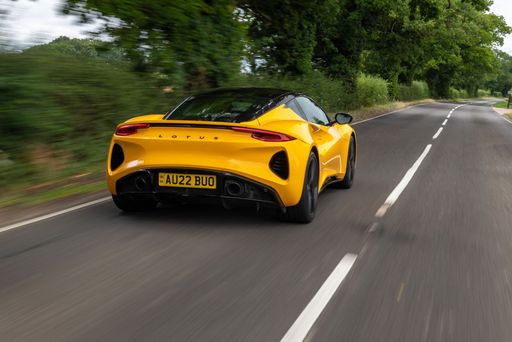 @ Lotus
@ Lotus
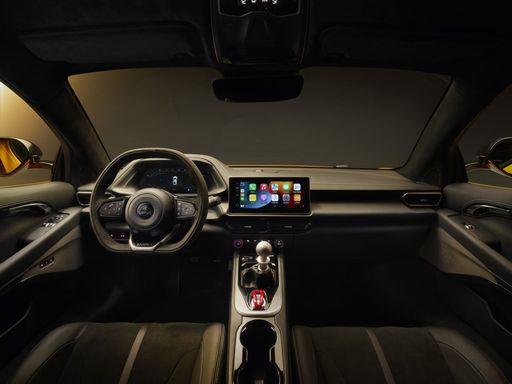 @ Lotus
@ Lotus
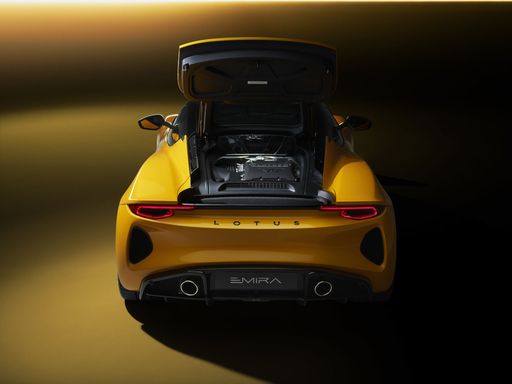 @ Lotus
@ Lotus
Dacia Spring
The Dacia Spring stands out as an affordable and environmentally friendly option in the electric vehicle market, combining practicality with a compact design ideal for urban settings. Its minimalist interior, while basic, provides all the essential features needed for a comfortable drive, reflecting its cost-effective approach. The vehicle's performance suits city driving, making it an appealing choice for those seeking an entry-level electric car.
details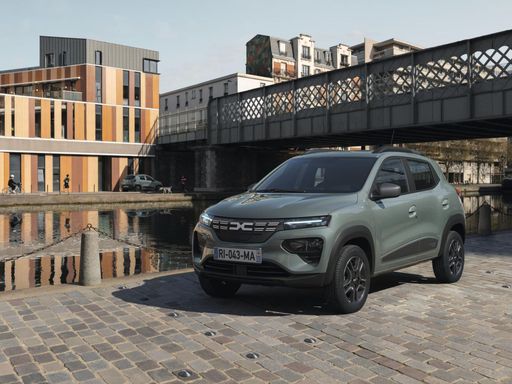 @ dacia-presse.de
@ dacia-presse.de
 @ dacia-presse.de
@ dacia-presse.de
 @ dacia-presse.de
@ dacia-presse.de

|

|
|
|
|
Costs and Consumption |
|
|---|---|
|
Price
82300 £
|
Price
14500 - 17100 £
|
|
Consumption L/100km
11.30 L
|
Consumption L/100km
-
|
|
Consumption kWh/100km
-
|
Consumption kWh/100km
13.2 - 14.1 kWh
|
|
Electric Range
-
|
Electric Range
225 - 228 km
|
|
Battery Capacity
-
|
Battery Capacity
26.80 kWh
|
|
co2
208 - 258 g/km
|
co2
0 g/km
|
|
Fuel tank capacity
52 L
|
Fuel tank capacity
-
|
Dimensions and Body |
|
|---|---|
|
Body Type
Coupe
|
Body Type
SUV
|
|
Seats
2
|
Seats
4
|
|
Doors
2
|
Doors
5
|
|
Curb weight
1521 kg
|
Curb weight
1030 - 1050 kg
|
|
Trunk capacity
208 L
|
Trunk capacity
308 L
|
|
Length
4413 mm
|
Length
3701 mm
|
|
Width
1895 mm
|
Width
1583 mm
|
|
Height
1226 mm
|
Height
1519 mm
|
|
Payload
-
|
Payload
265 - 285 kg
|
Engine and Performance |
|
|---|---|
|
Engine Type
Petrol
|
Engine Type
Electric
|
|
Transmission
Automatic, Manuel
|
Transmission
Automatic
|
|
Transmission Detail
Dual-Clutch Automatic, Manual Gearbox
|
Transmission Detail
Reduction Gearbox
|
|
Drive Type
Rear-Wheel Drive
|
Drive Type
Front-Wheel Drive
|
|
Power HP
365 - 405 HP
|
Power HP
44 - 65 HP
|
|
Acceleration 0-100km/h
4.3 - 4.5 s
|
Acceleration 0-100km/h
13.7 - 19.1 s
|
|
Max Speed
283 - 290 km/h
|
Max Speed
125 km/h
|
|
Torque
420 - 430 Nm
|
Torque
113 - 125 Nm
|
|
Number of Cylinders
4 - 6
|
Number of Cylinders
-
|
|
Power kW
268 - 298 kW
|
Power kW
33 - 48 kW
|
|
Engine capacity
1991 - 3456 cm3
|
Engine capacity
-
|
General |
|
|---|---|
|
Model Year
2022 - 2023
|
Model Year
2024
|
|
CO2 Efficiency Class
G
|
CO2 Efficiency Class
A
|
|
Brand
Lotus
|
Brand
Dacia
|
Lotus Emira
Revolutionizing the Road: The Lotus Emira
The Lotus Emira marks a new era in the automotive world, blending style, performance, and cutting-edge technology. As the latest addition to the renowned British manufacturer’s lineup, this dynamic coupe stands as a testament to Lotus's commitment to innovation and exhilarating driving experiences. Whether carving through mountain passes or cruising on highways, the Emira promises an unforgettable ride.
Sleek Design Meets Optimized Performance
Praised for its sleek and sculpted body, the Lotus Emira is built to catch the eye and dominate the road. Its striking aerodynamics are not just for show; they enhance performance by reducing drag and increasing downforce. The body dimensions stand at 4413 mm in length, 1895 mm in width, and 1226 mm in height, providing a stable yet agile stance.
Under the hood, the Emira offers a choice between two robust engines. The first option is the I4 Petrol Automatic, delivering 365 horsepower, while the second is the V6 Supercharged Petrol Manual with an impressive 405 horsepower. Both variants come with rear-wheel-drive, ensuring a pure and thrilling driving experience.
Precision Engineering: Technical Specifications
The Lotus Emira continues the brand’s tradition of lightweight sports cars, with its curb weight resting at just 1521 kg. This lightness is instrumental in its nimble handling and agile cornering capabilities. Its seating capacity is designed for two, allowing for a focused and intimate driving environment.
The acceleration of this coupe leaves little to be desired, with the Emira I4 version achieving 0 to 100 km/h in a mere 4.5 seconds. For those opting for the potent V6 engine, this time drops to an exhilarating 4.3 seconds. Top speeds vary slightly, with the I4 clocking in at 283 km/h and the V6 pushing the needle to 290 km/h.
Fuel Efficiency and Environmental Considerations
The Lotus Emira boasts a respectable fuel consumption figure, with the V6 variant registering at 11.3 L/100km. While it may not be the most fuel-efficient car in its class, the performance it delivers is well worth the efficient fuel usage, allowing for a satisfying but conscientious drive.
Though performance-oriented, the Emira does keep an eye on reducing its environmental impact. It falls into CO2 Efficiency Class G, registering CO2 emissions at 208 g/km for the I4 and 258 g/km for the V6.
Comfort and Amenities: Inside the Emira
The inside of the Emira is no less stunning than its exterior. The interior is a fusion of luxury, technology, and functionality. While seating is limited to two, the cabin is thoughtfully designed for comfort and accessibility, complemented by the 208 L trunk capacity that offers ample space for a weekend getaway.
The First Edition trim, available in both automatic and manual variants, brings with it a suite of premium amenities and finishes. From the high-quality materials used throughout the cabin to the seamless integration of advanced infotainment systems, the Lotus Emira provides a driving experience that's as refined as it is thrilling.
A New Benchmark for Lotus
The Lotus Emira is much more than just a sports coupe; it's a bold statement. Priced competitively from €95,995, the Emira is poised to redefine expectations for what a high-performance vehicle can deliver. It exemplifies Lotus's heritage of engineering excellence while embracing modern advancements, ultimately setting a fresh benchmark for the renowned brand.
For enthusiasts and collectors alike, the Lotus Emira stands out as an attractive opportunity to own a piece of automotive evolution. Its blend of power, elegance, and advanced technology makes it a formidable contender in the high-performance sports car segment, ensuring its place in the annals of motoring history.
Dacia Spring
The Revolution of Affordable Electric Mobility: The Dacia Spring
The automotive world has witnessed remarkable advancements in electric vehicles (EVs), with the Dacia Spring emerging as a noteworthy contender in the affordable segment. Combining efficiency, affordability, and practicality, the Spring offers an intriguing prospect for eco-conscious individuals and city dwellers alike.
Powertrain and Performance: A Look Under the Hood
The Dacia Spring is equipped with an electric motor that delivers between 44 to 65 PS, translating into a versatile driving experience tailored to urban landscapes. It operates on a front-wheel-drive system, ensuring a familiar and manageable handling experience.
Dacia Spring's electric engine is paired with an automatic transmission, utilising a reduction gearbox. This setup allows for smooth acceleration and a top speed of 125 km/h, ensuring that everyday driving scenarios are handled with ease.
Efficiency and Range: Eco-Friendly without Compromise
Efficiency is a cornerstone of the Dacia Spring's design, boasting an energy consumption of just 13.2 to 14.1 kWh per 100 km. When fully charged, its 26.8 kWh battery offers a respectable range of 225 to 228 km, making it ideal for daily commutes and short trips.
Furthermore, the Spring takes pride in its commendable CO2-efficiency class A, emphasising its commitment to reducing environmental footprint with a zero-emission profile.
Design and Practicality: Compact yet Comprehensive
Lying in the SUV category, the Dacia Spring is compact with dimensions of 3701 mm in length and 1583 mm in width, making it a perfect match for urban environments where space is at a premium. Despite its modest size, it provides a generous boot space of 308 litres, ensuring practicality isn’t sacrificed.
Comfort and Interior: For the Everyday Journey
The Dacia Spring comfortably seats up to four passengers. The cabin offers a minimalist yet functional design, available in multiple trim lines including Essential, Expression, and Extreme, allowing customers to choose according to their taste and requirement.
With its ergonomic layout and simplicity, the interior is crafted to enhance the driving experience by focusing on essential needs, avoiding unnecessary distractions.
Affordability and Accessibility: Breaking Barrier
The Dacia Spring stands out in the electric vehicle market due to its affordability, with prices ranging from 16,900 to 19,900 €. This ensures that environmentally friendly transportation is accessible to a broader audience.
Additionally, the Spring allows for cost-effective maintenance and operational expenses, offering monthly running costs between 570 to 599 € and cost per km between 22.8 to 24 cents, making it an economical choice in the long run.
Final Thoughts: The Future of Urban Mobility
In summary, the Dacia Spring serves as a testament to how electric vehicles can be both affordable and practical, without compromising on essential features. Whether it is for the eco-conscious urbanite or those looking for a cost-effective daily driver, the Spring is positioned as a viable solution for navigating the future of urban mobility.
The prices and data displayed are estimates based on German list prices and may vary by country. This information is not legally binding.
